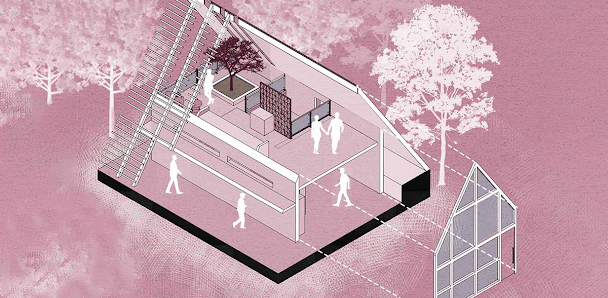(Semester 4)
THE DESIGN BRIEF: BACKGROUND
SYAMANTAK
In such ecologically sensitive & culturally rich setting of Dhamapur village, Syamantak: a center for experiential, lifelong learning and sustainable living is located. “Our education is related to our Mother Earth & nobody should be forced to leave his village for bread, butter & education” – the thought forms an integral part of their ethos.
Processes of self-designed organic learning are run by the residents of Syamantak community. They believe in a system of education where it uses real life activities as a medium of spiritual self-evolvement, exploration of social entrepreneurship skills with the perspective of ecological sustainability and social justice.
ĀVĀSYAM – The place of living
(: Sanskrit; meaning abode, residence, home, place of living)
Although Syamantak currently has residential facilities, it is looking to construct a separate residential facility for its students, mentors & visitors, in the nearby area. The residential facility is imagined to follow a similar ethos in its Architecture and hence be developed on lines of self-sustainability in terms of planning and materials used. However, the Architectural Designer can take the freedom to interpret these ideas in his/her own way and hence come up with a contemporary yet traditional solution.
PRE- DESIGN INQUIRIES
While the broader idea of the studio revolves around interpreting an Architectural Form in a unique setting like Dhamapur, the studio intends to seek answers to the following research questions:
- What could be the architectural approach to design in a setting which in itself has a strong character and identity?
- How can Architecture fit in or stand out in terms of sustainability?
The following set of design inquiries are crucial for the given project:
1. How does the perception of ‘Home’ change with cultural context, individual identity and economy?
2. Does materiality and material culture affect the idea of a ‘Home’?
3. What are the effects of climatic context and natural setting on a house FORM?
4. Can the configuration of a house-form go beyond the understanding of mere functionality?
Studio mentors:
Anuradha Wakade, Chaitra Sharad, Mythili Shetty, Payoja Raikar, Prachi Nadkarni, Rajan Subhedar

